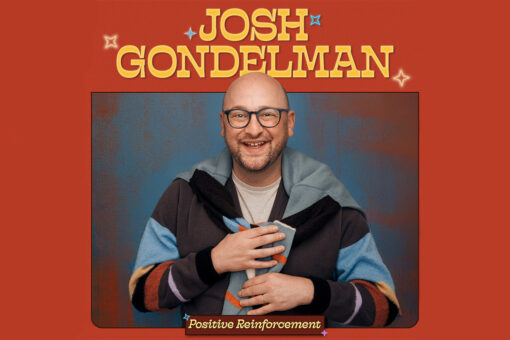Alicia Svigals is the world’s foremost klezmer fiddler. Since the 1980s, Svigals has been central to klezmer music’s revival. She was a founding member of the Klezmatics and is widely credited with revitalizing the klezmer fiddling tradition, in particular through “Fidl,” her 1997 debut album. More than two decades later, Svigals is back with a burning passion with her follow-up album “Fidl Afire,” which is being released on the Borscht Beat record label on June 23.
I got the opportunity to speak with Svigals ahead of the release of “Fidl Afire.” She described the album as being, in some ways, a career retrospective and was kind enough to give an overview of her upbringing and early career.
Svigals started our conversation by talking about her highly alternative Jewish upbringing in the New York suburbs. While the klezmer revival would only begin to get underway when Svigals was a teenager, she seemed destined to participate. Rather than going to Hebrew school, she grew up learning Yiddish songs at the Workmen’s Circle (now known as the Workers Circle). At the same time, she was learning to play classical and eventually folk music styles on her violin.
Svigals recounted learning the blues from Andy Statman, who was among the first group of musicians to spearhead the klezmer revival. This was just as the term “klezmer music” was going to come into popular usage, largely based on the work Statman was doing at the time, studying the Jewish folk music we now call “klezmer” with Dave Tarras. Svigals also noted that later in life she learned that a great uncle of hers played with Naftule Brandwein. Tarras and Brandwein are generally viewed as the two most important musicians whose work inspired the klezmer revival.
While the klezmer bug still hadn’t reached Svigals, she was receiving the folk music education of legends. “I was starting to get interested in Irish fiddling, bluegrass and old time music in the city. I would play on the streets and in subways to earn money to go to music camp and ultimately to go to college,” said Svigals. “I met these Italian bluegrass musicians who didn’t really speak English, but taught me to play bluegrass.”
Then at 19, Svigals packed up to hitchhike through Europe with $10 in her pocket. This opened her up further to folk traditions from all over the world. “I ended up playing Berber music in Paris, and there was a traditional Italian folk music revival going on as well. I had been majoring in neuroscience in college when I spent this year abroad. When I got back, I changed my major to musicology,” said Svigals.
Svigals finished up her degree (with a senior project on Portuguese fado music and flamenco, of course) and spotted an ad in The Village Voice, Greenwich Village’s famous countercultural publication. It was 1985, and that ad would bring together the musicians who would eventually found the Grammy-winning Klezmatics. The Klezmatics would end up being a fusion super group with each member bringing their own unique flair and musical background. Past her already vibrant cornucopia of sonic material, Svigals mentions a lot of influence from her obsession with heavy metal as well as a job she had playing Greek music at a nightclub.
The group would interface with other countercultural artists, even past the world of music. While they played with John Zorn, Marc Ribot and others of New York’s experimental “downtown music” scene, they also collaborated with the playwright Tony Kushner and poets Allen Ginsburg and Jerome Rothenberg, among others.
Of interest to many has been the Klezmatics’ centering of queer identity. Founding members Svigals and Lorin Sklamberg are both gay and were committed to being out as musicians, especially against the backdrop of the AIDS epidemic.
“This was our chance to help change things in our corner of the world. So we were very committed to being out on stage and saying things that we knew some gay person in the audience would be thrilled to hear. There was no internet then. You were just alone and you might have thought you were the only one,” said Svigals. “It’s hard to explain to people now — you know young people under the age of 60 — how different it was to be out in the 1980s.”
Stage presence was one thing, but just as importantly, they would change gendered lyrics in their music. As the klezmer genre has strong ties to the Jewish wedding, Svigals and Sklamberg would take traditional love songs and make them about two men or two women.
They attended the second year of KlezCamp, an important gathering place for the klezmer revival. “Lorin and I showed up, and, like, there were gay people everywhere! Everybody was looking around at each other, going ‘huh! — that’s interesting.’ It was just clear that Yiddish culture, this alternative Jewish culture that we were forging, was going to be a place that we would feel more comfortable,” said Svigals.
As Svigals began to turn towards her solo career, nurturing the klezmer fiddle tradition became of the utmost importance to her, leading to her 1997 solo album “Fidl,” which Svigals said was the first fiddle-centered klezmer revival album. The revival had been greatly clarinet-centered as it drew heavily on the aforementioned early-1900s musicians Tarras and Brandwein, who were both clarinetists. Svigals, however, knew the importance of the Jewish fiddle. As she explained, the fiddle has long been important as a Yiddish symbol whether through the legendary Old World violinist Stempenyu, the art of Marc Chagall or the classic musical “Fiddler on the Roof.”
After “Fidl,” Svigals stayed busy with a solo career that continued to be fruitful. She’s run her own ensemble, Alicia Svigals’ Klezmer Fiddle Express, composed film scores, taught countless musicians and done so much more. More than two decades after “Fidl,” the follow-up solo album that became “Fidl Afire” then came into the works.
Svigals called on many of her usual collaborators to come together, with an eclectic setlist of music Svigals has played over the years. It includes “straight-ahead” klezmer standards, tunes never before recorded as well as original material by Svigals herself including “Mayn Mame Ver Ikh” (“I’m becoming my mother”), a Yiddish song Svigals wrote as a part of a song cycle on motherhood.
“It was very moving to finally get my people together and make it permanent,” Svigals said. “These are people I love, who I’ve been playing with for decades. We’re a community. We’ve seen each other’s children grow up, and so it really wasn’t just any old recording session. It really felt like a career retrospective in some ways.”
Near the end of our conversation, Svigals brought up Emma Goldman as well as the idea of “bread and roses,” reflecting on the necessity of joyful music in dark times. “You have to have some joy or you’re not gonna have the koyekh to get out into the world and fix things,” she said. “You still have to live and you have to draw on the joy of just being alive and dancing and singing with your dear friends and family — people you love. Music keeps people human.”



